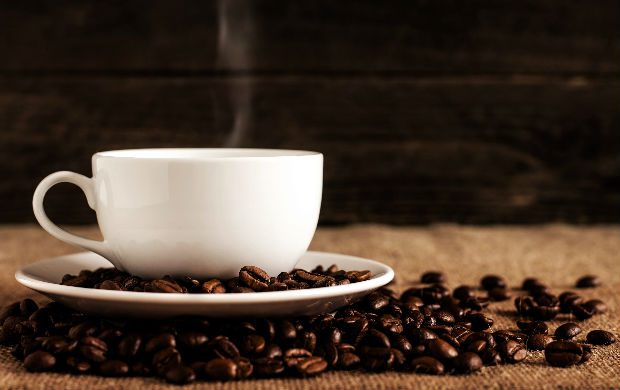Coffee brewing is an art that calls for dedication, precision, and creativity.
When it comes to starting the day with a delightful, aromatic cup, it is important to delve into the intricacies of coffee making to elevate your morning ritual.
Mastering the art of coffee brewing means knowing the different methods, tools, and tricks to unlock the true essence and flavors of the coffee beans.
In this comprehensive guide, we will be exploring the best ways to make coffee, fine-tuning the brewing process, and mastering the final touches.
Diving Into The World Of Coffee Making
Making coffee is more than just pouring hot water over grounds; it is a nuanced process that involves numerous factors which can significantly impact the final flavor profile.
Let’s first take a look at how one can find guidance on coffee making, before examining different coffee brewing methods, and lastly, understanding the importance of coffee bean selection.
Finding A Comprehensive Guide On Coffee Making
For beginners, coffee brewing can seem like a daunting task with the plethora of options and techniques available.
It is essential to have a go-to source that offers clear and concise information.
A great way to find a comprehensive guide is to explore bookstores or libraries for books dedicated to coffee brewing. “The World Atlas of Coffee” by James Hoffmann and “How to Make Coffee:
The Science Behind the Bean” by Lani Kingston are excellent reads.
Additionally, joining coffee-making forums and following renowned coffee bloggers can provide you with real-time tips and techniques from coffee enthusiasts around the world.
Exploring Different Brewing Methods
There is an array of brewing methods that will help you to make the perfect cup of coffee.
Each method varies in terms of complexity, flavor extraction, and required equipment. The most popular methods include French press, pour-over, and espresso.
French Press
The French Press method is well-regarded for its simplicity and ability to create a full-bodied, rich coffee.
It involves steeping coarsely ground coffee in hot water and then separating it by pressing down a metal or plastic plunger through a mesh sieve.
Pour-Over
The pour-over method is known for its clean and vibrant flavors. It involves pouring hot water over coffee grounds in a filter.
The water then passes through the coffee and filter into a carafe or mug.
Espresso
Espresso brewing involves forcing a small amount of nearly boiling water through finely-ground coffee beans.
This method is somewhat more complex but produces a concentrated, bold coffee shot that is the base for various coffee drinks like cappuccinos and lattes.
Understanding The Importance Of Coffee Bean Selection
Selecting the right coffee beans is paramount to achieving the desired flavor in your cup.
Different regions produce beans with distinct taste profiles. For instance, Ethiopian beans often have a floral, fruity quality, whereas Sumatran beans might be earthy and full-bodied.
Knowing the difference and experimenting with single-origin beans can significantly improve your coffee brewing skills.
Pay attention to the freshness of the beans. Freshly roasted beans will yield a much more flavorful cup than those that have been sitting on the shelf for months.
Fine-Tuning The Brewing Process
The second phase in mastering coffee brewing involves refining the brewing process.
This includes optimizing the coffee grind size, mastering the water temperature, and perfecting the coffee-to-water ratio.
Optimizing Coffee Grind Size
The grind size plays a critical role in the extraction process and thereby the taste of the coffee.
A finer grind is perfect for methods like espresso, where the water has less contact time with the coffee.
On the other hand, a coarser grind is suitable for a French press which requires a longer steeping time.
Experiment with grind sizes and find the optimal coarseness for your preferred brewing method.
Mastering The Water Temperature
Water temperature is essential in extracting the right flavor compounds from the coffee. Generally, a temperature range of 195°F (91°C) to 205°F (96°C) is considered ideal.
Too hot, and your coffee might taste over-extracted and bitter; too cold, and it might be under-extracted and flat.
Perfecting The Coffee-To-Water Ratio
The coffee-to-water ratio is crucial for achieving the strength and flavor profile you desire.
A general guideline is to use 1 to 2 tablespoons of coffee for every six ounces of water. However, this ratio can be adjusted according to personal preference.
Using a scale to measure can help in achieving consistent results.
Mastering The Final Touches
The final stage of coffee brewing artistry involves the touches that make your coffee truly special.
This includes the art of coffee presentation, experimenting with different additives, and pairing your coffee with complementary foods.
The Art Of Coffee Presentation
Presentation enhances the coffee-drinking experience. Invest in a set of beautiful coffee cups.
Learn the basics of latte art to add a personal touch to your coffee, or simply serve with a sprig of mint or a cinnamon stick for an added flair.
Experimenting With Different Additives
Add depth to your coffee by experimenting with additives such as cinnamon, nutmeg, or cocoa powder.
You can also try different types of milk like almond, coconut, or oat for a variation in flavor and texture. Honey, maple syrup, and agave nectar are great alternatives to regular sugar.
Pairing Your Coffee With Complementary Foods
Just like wine, coffee can be paired with foods that enhance its taste.
A rich, dark roast pairs well with sweet pastries and chocolate, while a light roast complements fruity desserts and mild cheeses.
Experiment with different combinations to find your perfect match.
Key Takeaway
Mastering the art of coffee brewing is a journey of exploration and refinement.
It’s about understanding the various elements involved in making coffee and continually evolving your technique.
Take the time to enjoy each step of the process, and savor the sensational experience that a perfectly brewed cup of coffee can bring to your morning ritual.








